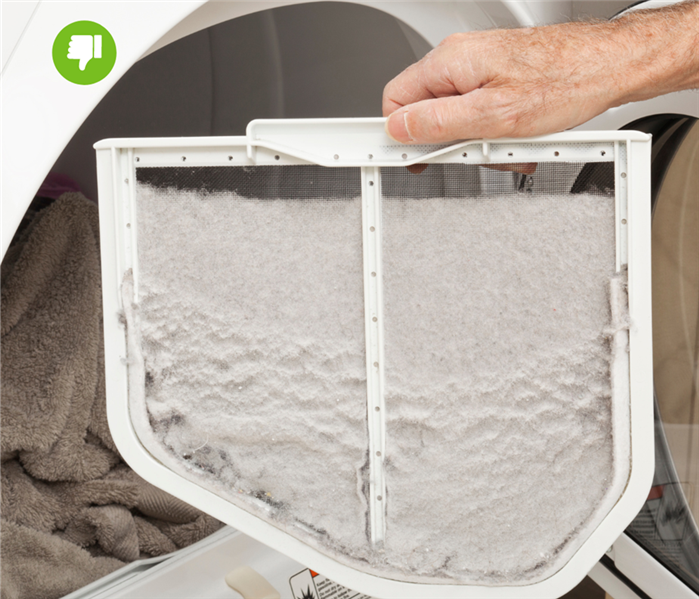Dryer Vents, Lint Traps, and their Hidden Dangers:
7/1/2024 (Permalink)
For most of us, laundry is a mundane, yet necessary chore. While we may not necessarily look forward to it, modern appliances have made this task more convenient and less strenuous. Gone are the days of hanging rows and rows of laundry on clotheslines in the backyard. Despite the convenience of laundry units, some regular maintenance is necessary to keep them from posing a hazard to your home.
According to Consumer Reports, each year dryers cause nearly 14,000 house fires and over $230 million in property damage. Around 27% of these fires are directly related to build-up in lint traps, dryer vents, ductwork, or even lint that has made its way into the heating element. Lint build-up prevents the hot air from passing through the ductwork, causing the dryer to work harder and potentially overheat. Keeping these areas clean and debris-free goes a long way in preventing fires.
Please keep these guidelines in mind, to help prevent dryer fires in your home:
- Don’t leave your dryer running while you are not home.
- Clean the lint screen between every load and do not run the dryer without it.
Note: If you use fabric softener you may need to clean build-up from the screen as well. - Clean the housing for the lint screen every month.
- Clean the dryer duct at least once a year.
- If you have accordion-style ducts, replace them with rigid metal duct systems. Accordion-style ducts sag and have ridges that cause lint to become trapped more easily.
- Use caution when drying chemically stained clothing. Clothes that may have been stained with gasoline, oil, or other chemicals should be hung to dry as putting these items in the dryer may spark fires.
- Keep the area around your dryer clean.
- Watch for signs that your dryer may be overheating:
- Burning smell coming from laundry room/dryer.
- Excess or more humidity than usual in your laundry room.
- Outside of the dryer is very hot.
- Clothes take longer than usual to dry.
- The dryer vent does not open fully when the dryer is running. This is usually a sign of a clog that is not allowing air to pass through the ductwork.
Don’t let a mundane chore turn into a big disaster. Take the proper precautions to help keep your home and family safe.
If an accident does occur in your home, call SERVPRO of Little Rock for fire restoration services. Our team of certified fire restoration professionals will be there for you and your family to make your home “Like it never even happened.”
Call 501-803-9700 for 24/7 emergency fire restoration service.






 24/7 Emergency Service
24/7 Emergency Service